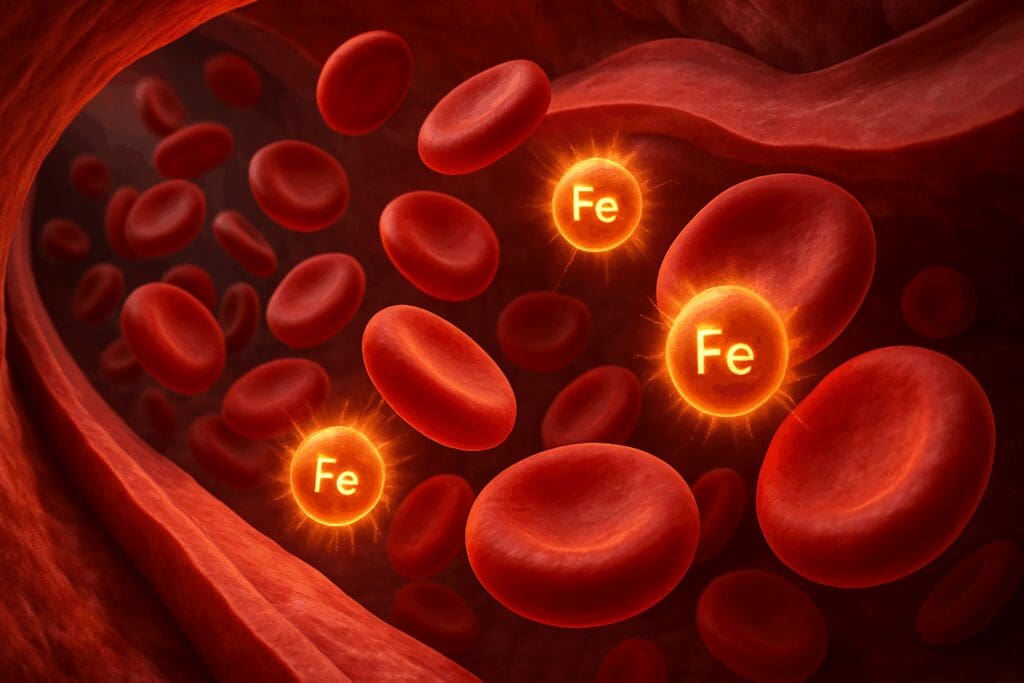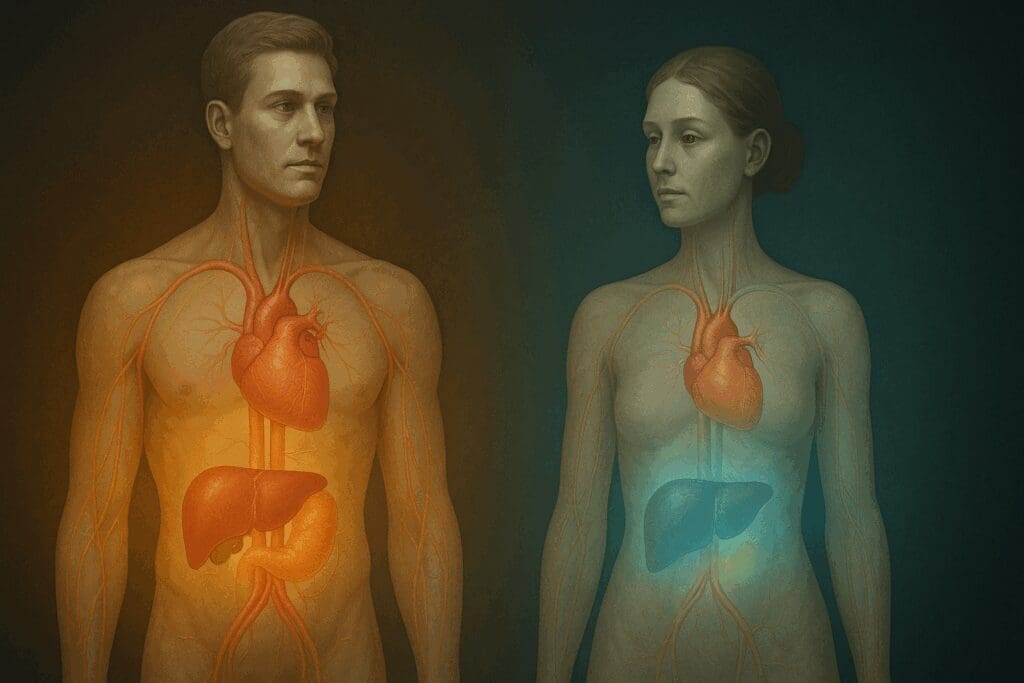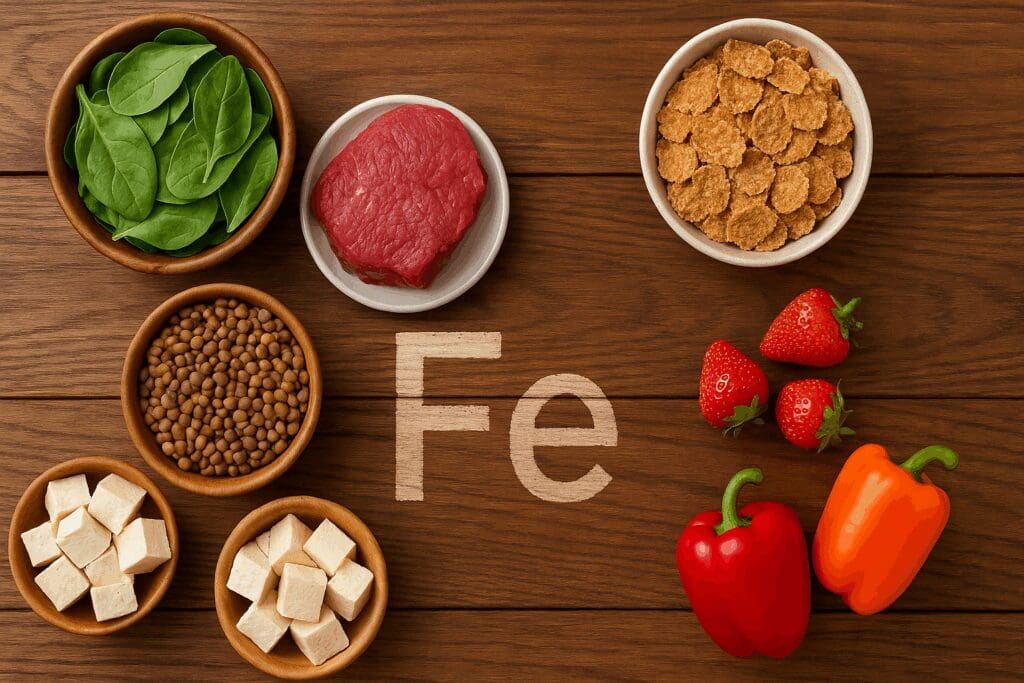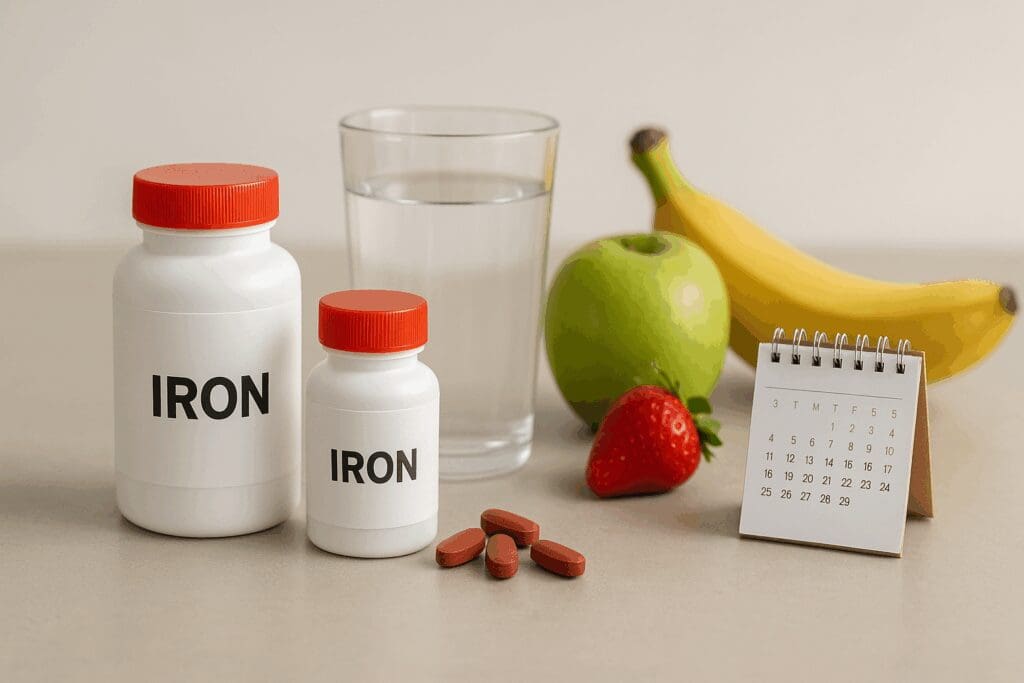Understanding the critical role of iron in women’s health begins with recognizing how this essential mineral supports everything from oxygen transport to hormonal balance and immune function. For many, discussions around nutrition focus on calories, vitamins, or trendy superfoods, often overlooking the foundational importance of maintaining healthy iron levels. Yet for women—particularly those in their reproductive years, during pregnancy, or as they age—iron needs are both unique and deeply consequential. This article delves into the vital nutrition facts every woman must know about the normal range for iron in women, exploring the science, statistics, and strategies that can help support long-term health and well-being.
You may also like: 10 Essential Nutrition Rules to Follow for a Healthy Diet for Women in 20s

Iron and Its Role in the Human Body
Iron is a trace mineral, but its impact on bodily function is anything but minor. It is a central component of hemoglobin, the protein in red blood cells responsible for transporting oxygen throughout the body. Without sufficient iron, the body cannot produce enough healthy red blood cells, leading to a condition known as iron-deficiency anemia. Beyond oxygen transport, iron is also essential for cellular energy production, DNA synthesis, and maintaining healthy skin, hair, and nails.
In women, iron plays additional roles tied to hormonal cycles, fertility, and pregnancy. Menstruation results in regular blood loss, which can significantly deplete iron stores if not replenished through diet or supplements. During pregnancy, the body’s demand for iron nearly doubles to support fetal development and increased maternal blood volume. Iron is also linked to cognitive function, mood regulation, and immune resilience, making it a cornerstone of both physical and mental health.
The Normal Range for Iron in Women: A Closer Look
When discussing the normal range for iron in women, it’s important to understand that this range refers to serum iron levels measured through blood tests. While various labs may use slightly different reference ranges, most agree that normal serum iron levels in women fall between 60 to 170 micrograms per deciliter (mcg/dL). However, these numbers alone do not paint a full picture. Additional metrics such as ferritin (which measures stored iron), hemoglobin, hematocrit, and transferrin saturation are crucial for a comprehensive view of iron status.
Ferritin, for example, is a more stable indicator of the body’s iron reserves. Healthy ferritin levels for women typically range from 12 to 150 nanograms per milliliter (ng/mL), though levels under 30 ng/mL are often considered a warning sign of depleted stores. Transferrin saturation—the percentage of transferrin (an iron-transport protein) that is saturated with iron—usually ranges from 15% to 50% in healthy individuals. These broader metrics allow healthcare providers to assess not just circulating iron, but also the body’s ability to store and utilize it efficiently.

Understanding the Average Iron Level and How It Compares by Gender
While the normal range for iron in women is well-established, it’s also helpful to consider the average iron level across different demographics. On average, women tend to have lower iron levels than men, largely due to menstruation and differing hormone profiles. The average iron levels in females typically hover around 70 to 120 mcg/dL, whereas the average for men is slightly higher, often between 80 to 140 mcg/dL. These variations highlight why gender-specific reference ranges and diagnostic criteria are necessary.
Healthy iron levels for women are closely tied to their life stages. For instance, adolescent girls may experience increased iron needs during puberty, while women of reproductive age must account for monthly menstrual losses. Pregnant women require even more iron, with daily recommended intake increasing from 18 mg to 27 mg to support both maternal and fetal needs. Postmenopausal women, on the other hand, generally require less iron due to the cessation of menstruation and reduced iron turnover.

Recognizing the Signs of Iron Imbalance
Maintaining normal iron levels is a delicate balancing act. Both deficiency and overload can have serious health consequences. Iron deficiency is far more common among women and can manifest in symptoms such as chronic fatigue, weakness, pale skin, shortness of breath, brittle nails, and increased susceptibility to infections. Cognitive effects may include difficulty concentrating, irritability, and even depressive symptoms.
On the opposite end of the spectrum, excessive iron levels—a condition known as hemochromatosis—can lead to tissue damage, joint pain, heart disease, and liver problems. While less common, iron overload can occur due to genetic factors, over-supplementation, or repeated blood transfusions. That is why it’s critical to monitor blood iron content and consult healthcare providers before initiating any form of iron supplementation.
Why Iron Needs Are Unique for Women
Women’s iron needs are significantly influenced by biological and physiological factors. The monthly loss of blood through menstruation is a primary driver of lower average iron levels in females. On average, a woman loses about 30 to 40 milliliters of blood during her menstrual period, equating to roughly 15 to 20 milligrams of iron. This recurring loss places women at a higher risk of iron deficiency, particularly if their diets are low in iron-rich foods or if absorption is impaired by gastrointestinal conditions or certain medications.
During pregnancy, iron becomes even more critical. The body must produce extra blood to support the growing fetus and placenta. Inadequate iron during this period has been linked to premature birth, low birth weight, and developmental delays. Postpartum, women continue to require sufficient iron to recover from childbirth and to support lactation. Clearly, maintaining healthy iron levels for women is not just a matter of avoiding fatigue; it’s foundational to maternal and child health.
Examining the Iron Levels Chart: Female Reference Values and Diagnostic Use
To aid in diagnosis and treatment, healthcare professionals often use an iron levels chart. Female-specific reference ranges are especially important for tailoring interventions appropriately. The chart includes several indicators: serum iron, ferritin, total iron-binding capacity (TIBC), transferrin saturation, and hemoglobin levels. For example, the normal hemoglobin range for women is generally 12.0 to 15.5 grams per deciliter. A drop below this threshold may indicate anemia, prompting further evaluation of ferritin and transferrin saturation.
The iron count chart is also useful in identifying subclinical deficiencies—situations where iron stores are low, but symptoms have yet to appear. This stage is particularly important because early intervention can prevent progression to anemia. Conversely, high serum iron or ferritin levels on the iron levels chart may trigger testing for hemochromatosis or other underlying conditions. Thus, the iron levels chart provides a comprehensive, multidimensional view of iron status that can inform individualized treatment plans.

Dietary Sources That Support Normal Levels of Iron in Women
Achieving and maintaining the normal range for iron in women is largely dependent on dietary intake. Iron comes in two forms: heme and non-heme. Heme iron, found in animal products such as red meat, poultry, and fish, is more bioavailable and easier for the body to absorb. Non-heme iron, found in plant-based sources like beans, lentils, tofu, fortified cereals, and dark leafy greens, is less readily absorbed but can still contribute significantly to iron intake, especially when consumed with vitamin C-rich foods like citrus fruits, bell peppers, or strawberries.
Cooking in cast-iron cookware can also enhance iron intake, particularly for those following vegetarian or vegan diets. Iron absorption can be inhibited by compounds such as phytates (found in whole grains and legumes), calcium (from dairy products), and polyphenols (in tea and coffee). Therefore, timing meals to separate iron-rich foods from inhibitors can optimize absorption. Women should also be mindful of nutrient interactions; for instance, taking calcium supplements at a different time than iron-rich meals can help improve uptake.

The Role of Supplements and When They Are Necessary
While a balanced diet is the ideal way to maintain normal iron levels, there are circumstances where supplementation becomes necessary. Iron supplements are commonly recommended for women diagnosed with iron-deficiency anemia, pregnant women, and those with absorption disorders or restrictive diets. Supplements typically come in the form of ferrous sulfate, ferrous gluconate, or ferrous fumarate, and dosage should be guided by a healthcare provider.
Over-the-counter multivitamins may contain small amounts of iron, but therapeutic doses are usually higher and require medical supervision. It’s crucial to monitor for side effects such as gastrointestinal discomfort, constipation, or darkened stools. In cases where oral supplements are poorly tolerated or ineffective, intravenous iron may be administered. Regular monitoring through blood tests ensures that supplementation restores levels to the normal range without causing excess.
Comparing Normal Iron Levels for Men and Women
A common point of confusion arises when comparing healthy iron levels for men versus women. Men generally have higher iron reserves, partly because they do not experience menstrual blood loss. The normal iron levels for men often range from 80 to 180 mcg/dL, and their ferritin levels may be as high as 300 ng/mL. These differences necessitate gender-specific benchmarks and therapeutic strategies.
While the average iron level in men provides a useful comparator, it should not be the standard against which women’s levels are judged. Attempting to match male reference ranges can lead to overtreatment in women, increasing the risk of iron overload. Instead, clinical guidelines emphasize tailoring targets to individual physiology, lifestyle, and medical history. Recognizing the unique needs of each gender ensures more effective and safer treatment outcomes.
Monitoring Iron Status Over Time
One of the most effective strategies for maintaining healthy iron levels is periodic monitoring, particularly for women with risk factors such as heavy menstruation, vegetarian diets, gastrointestinal conditions, or pregnancy. Annual physicals often include a complete blood count (CBC), which can offer indirect clues about iron status. However, more targeted tests like serum ferritin, transferrin saturation, and serum iron provide deeper insight.
Tracking these metrics over time can reveal trends that inform lifestyle or dietary changes. For instance, a gradual decline in ferritin may signal the need for increased iron intake before anemia sets in. Conversely, consistently high levels may warrant investigation into underlying causes. Personalized monitoring empowers women to take proactive steps in managing their nutrition and overall health, minimizing the risk of complications and maximizing vitality.

Recommended Iron Intake: Aligning Diet with Daily Needs
Understanding the recommended iron intake is key to preventing deficiency while avoiding unnecessary supplementation. The Recommended Dietary Allowance (RDA) for iron varies by age, gender, and physiological status. For adult women aged 19 to 50, the RDA is 18 mg per day. During pregnancy, this increases to 27 mg, while lactating women need about 9 to 10 mg. After menopause, the requirement drops to 8 mg daily, aligning more closely with the needs of adult men.
Translating these numbers into dietary choices involves both food selection and meal planning. A 3-ounce serving of beef contains roughly 2.1 mg of heme iron, while a cup of cooked lentils offers about 6.6 mg of non-heme iron. Fortified cereals can contribute up to 18 mg per serving, making them an efficient option for meeting daily needs. Women should aim for a diverse diet that includes both heme and non-heme sources, supported by nutrients that enhance absorption.
Addressing Common Myths and Misconceptions About Iron
Iron is often the subject of health myths and misinformation. One common misconception is that all women need iron supplements, regardless of their individual status. This blanket approach can lead to unnecessary intake and potential toxicity. Another myth is that vegetarians cannot maintain adequate iron levels, which is untrue when meals are properly planned to include iron-rich plant foods and absorption enhancers.
Some believe that iron levels can be accurately assessed through symptoms alone, but the reality is that lab testing is the only reliable method. Fatigue, for instance, can result from numerous causes, not just iron deficiency. Clarifying these misconceptions helps women make informed decisions based on science rather than hearsay, promoting better health outcomes through accurate education and evidence-based practices.
Frequently Asked Questions (FAQ) on Understanding and Optimizing Iron Levels in Women and Men
1. Why does the normal range for iron in women vary across different stages of life?
The normal range for iron in women can fluctuate significantly due to hormonal shifts, menstrual blood loss, pregnancy, and menopause. During menstruation, women are more prone to lower blood iron content because of monthly blood loss, making iron deficiency more common in reproductive years. Conversely, postmenopausal women often experience an increase in their average iron levels, as iron loss through menstruation ceases. Pregnancy demands an even higher iron supply to support fetal development and increased blood volume, often pushing iron needs beyond what’s typically captured in an iron levels chart female patients follow. Understanding these life stage variations is crucial to interpreting the normal levels of iron in woman populations and adjusting dietary strategies accordingly.
2. How can stress and lifestyle choices impact iron levels in men and women?
Chronic stress, poor sleep, and overtraining can negatively affect the body’s ability to absorb and utilize iron. In men, these stressors may contribute to inflammatory responses that interfere with maintaining healthy iron levels for men. Women with intense workout routines or restrictive diets may inadvertently suppress iron absorption, especially if their intake of iron-rich foods or supplements is inconsistent. A detailed iron levels chart female athletes use often reflects fluctuations during peak training periods. While the normal iron levels for men are less likely to be influenced by menstruation, both sexes benefit from managing stress and ensuring a nutrient-dense diet to maintain a stable iron count chart.
3. What are some early, non-obvious signs that your blood iron content may be off?
Beyond the well-known symptoms like fatigue and pallor, less obvious signs of imbalanced blood iron content include restless legs, brittle nails, cold hands and feet, and difficulty concentrating. In both men and women, even a subtle deviation from the average iron level can influence mood and cognitive function. For women, monitoring these symptoms in the context of their normal range for iron in women can help identify deficiency before anemia develops. Men may not have monthly losses, but if their normal iron levels in males dip due to malabsorption or internal bleeding, these quiet symptoms may be the only early indicators. Proactively checking against an iron levels chart can catch these patterns before they escalate.
4. Are there genetic factors that influence the normal iron levels for men and women?
Yes, genetics play a significant role in how the body regulates and stores iron. Hereditary hemochromatosis, more common in men, causes excessive iron absorption and can lead to dangerously high iron levels for men if untreated. Women, especially those with certain gene variants, may also absorb more or less iron than average, altering their personal normal range for iron in women. These differences are not always reflected in a generalized iron count chart, making genetic testing a worthwhile option for those with a family history of iron-related disorders. Understanding your genetic predisposition can help tailor your monitoring strategy using tools like an iron levels chart female and male patients may use over time.
5. How should iron intake be adjusted for women following plant-based diets?
Women on vegetarian or vegan diets often need to consume more iron than omnivores due to lower bioavailability of non-heme iron from plants. To support healthy iron levels for women, these individuals can benefit from consuming vitamin C-rich foods alongside plant-based iron sources like lentils, tofu, and fortified cereals. Since absorption rates vary, tracking personal data against an iron levels chart female vegetarians use may reveal trends over time. This becomes even more important during menstruation or pregnancy, when iron requirements spike. Adjustments to match the normal levels of iron in woman populations may involve supplements tailored to individual dietary patterns and digestion efficiency.
6. How reliable are iron count charts and lab tests for detecting long-term deficiencies?
While iron count charts provide useful reference points, they offer only a snapshot in time and may miss chronic, low-grade deficiencies. Ferritin—a marker of stored iron—is a more reliable long-term indicator, especially in women who may have fluctuating serum iron due to menstrual cycles. A healthy ferritin range should be interpreted alongside the normal range for iron in women to get a comprehensive picture. In men, even if normal iron levels in males appear adequate, low ferritin might signal underlying inflammation or gradual depletion. For both sexes, interpreting lab results through the lens of average iron levels and clinical symptoms leads to more accurate diagnosis and intervention.
7. Can hormonal contraceptives affect average iron levels in females?
Yes, hormonal contraceptives often reduce menstrual bleeding, which can lead to a gradual increase in the average iron levels in females. This effect can be beneficial for women with a history of iron deficiency anemia. However, over time, the suppression of natural menstrual iron loss might push some women toward the upper end of the normal range for iron in women. Monitoring trends on an iron levels chart female patients maintain while on birth control can provide insight into whether supplementation is still needed. Healthcare providers may adjust the recommended iron intake based on these shifting dynamics.
8. How does aging affect the iron levels chart in male and female populations?
As people age, iron absorption efficiency can decline, especially in individuals with gastrointestinal issues like atrophic gastritis or those on proton pump inhibitors. In older men, even with no blood loss, maintaining normal iron levels in males may become difficult due to poor nutrient uptake. For women, postmenopausal changes reduce iron loss, often bringing their levels closer to the healthy iron levels for men. However, excess iron accumulation in the elderly can become a concern, especially in the absence of menstruation. Reviewing one’s status annually against a current iron levels chart helps guide whether dietary changes or medical interventions are necessary.
9. What emerging technologies could improve iron monitoring and management?
Innovative at-home testing kits and wearable biosensors are being developed to monitor iron levels with greater frequency and convenience. These tools could track daily changes in blood iron content and correlate them with symptoms, dietary intake, and activity levels. For women, this would allow real-time mapping against the normal range for iron in women across their menstrual cycle, providing individualized insight. For men, such technologies could refine assessments of normal iron levels for men, catching subtle changes before clinical symptoms arise. When integrated with AI-driven nutrition platforms, these innovations could automatically adjust dietary recommendations based on fluctuations in iron levels chart data.
10. How can people personalize their recommended iron intake using lifestyle data?
Rather than relying solely on generalized dietary guidelines, people can customize their recommended iron intake by factoring in metrics like activity level, stress, menstrual cycle, and gut health. Women, especially those who are highly active or prone to heavy periods, may require adjustments beyond what the average iron levels in females suggest. Men with high muscle mass or those engaging in endurance sports may also need elevated intake despite appearing within the healthy iron levels for men. Logging trends over time with the help of a detailed iron levels chart and symptom tracker can uncover patterns missed during routine checkups. Personalized nutrition plans based on these insights provide a more accurate, proactive approach to maintaining optimal iron status.
Final Thoughts: Supporting Lifelong Wellness Through Iron Awareness
Maintaining healthy iron levels is not merely a matter of avoiding deficiency; it is a foundational aspect of overall wellness, particularly for women. From adolescence through menopause, iron needs fluctuate with physiological demands, making personalized nutrition and medical guidance essential. Understanding the normal range for iron in women empowers individuals to interpret lab results meaningfully, engage in informed dialogue with healthcare providers, and make strategic dietary choices.
Regular monitoring, tailored supplementation when necessary, and a diet rich in iron-enhancing nutrients can collectively ensure that women remain within the optimal range for lifelong health. With the growing awareness of gender-specific nutritional needs, recognizing the importance of blood iron content, using tools like the iron count chart, and aligning with recommended iron intake guidelines can have far-reaching impacts on energy, immunity, cognitive function, and reproductive health. By demystifying the complexities of iron metabolism and offering practical strategies for maintaining balance, women can take an active role in their nutritional well-being—one informed choice at a time.



